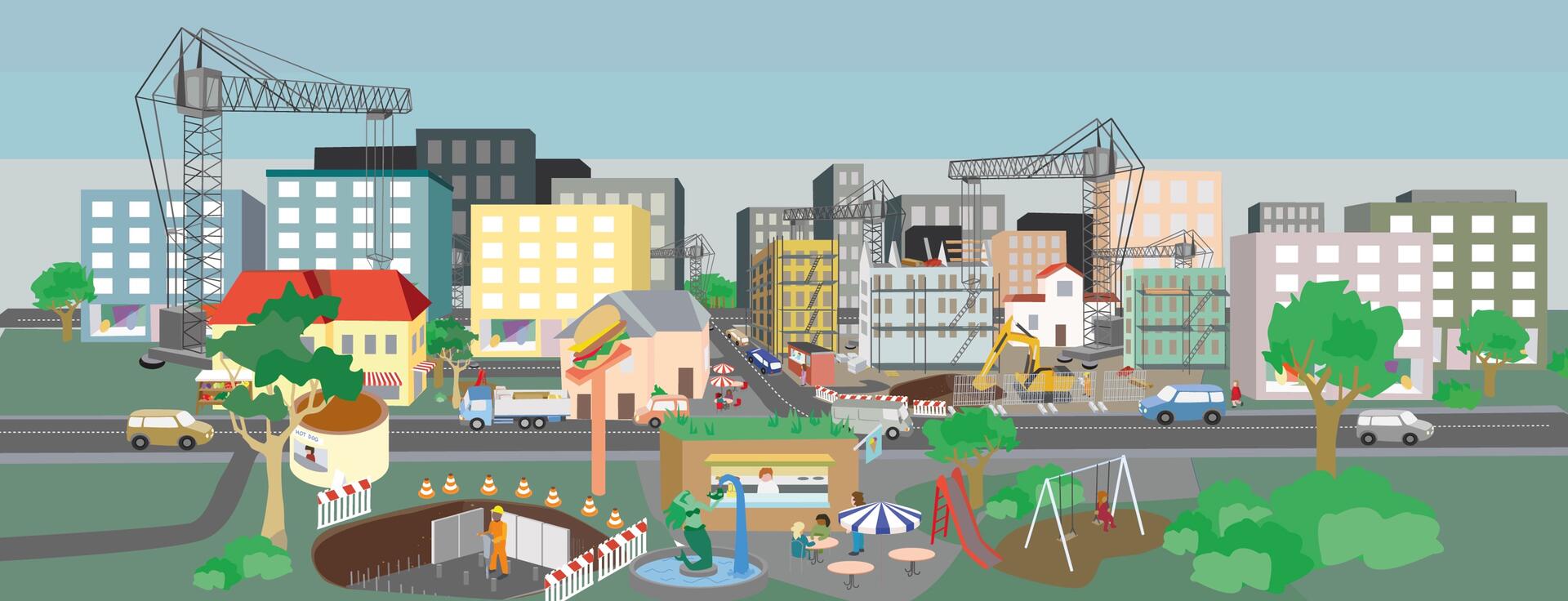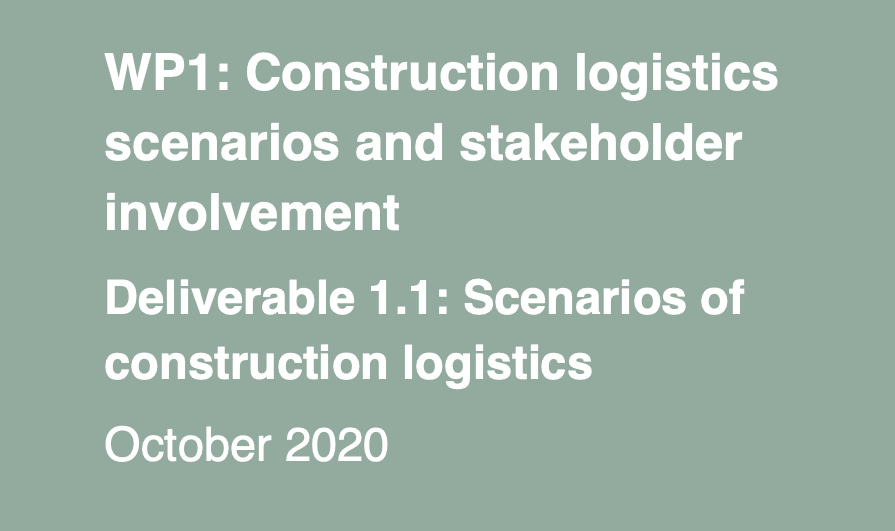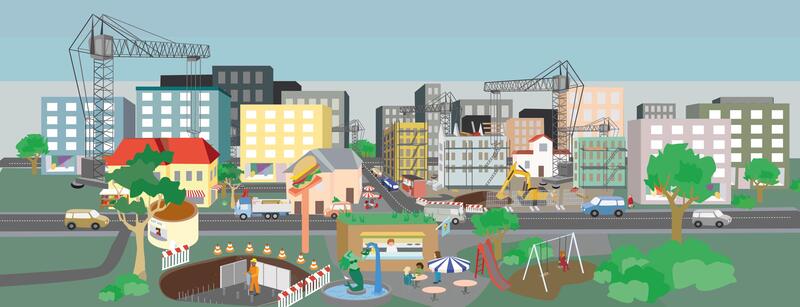
Identify the components of the construction logistics process
Reports

Executive summary
Construction logistics scenarios is an illusive term, that needs to be defined to be useful. This deliverable defines construction logistics scenarios as part of both the construction process planning and the construction logistics planning. It is defined on three hierarchical levels; strategic, tactical and operational and these three levels are related to the project phases of the construction project.
• On the strategic level, in the strategic planning phases of the project, we need to identify the scope and goals of logistics in a construction project. The scope is related to geographical boundaries and the goal of the stakeholders involved.
• On the tactical level, in the planning phase of the project, we identify several scenarios of construction logistics. These scenarios are to include contextual and logistical considerations.
• On the operational level, in the implementation phase of the project, we identify and implement a specific construction logistics setup.

This deliverable D1.2 Evaluations of construction logistics scenarios at implementation partners is part of WP1 Construction logistics scenarios and stakeholder involvement in the MIMIC project. The aim of D1.2 is to provide a catalogue of case studies from Belgium, Sweden and Norway (Tabel 1), each providing an insight to construction logistics activities, impacts and learnings.

Executive summary
Urban construction projects are essential in reducing the housing deficit of the latest urbanization trend. As such, construction projects contribute to more attractive, sustainable and economically viable urban areas once they are finished. However, construction work and construction material flow activities cause severe negative impacts on the surrounding community during the construction process. The MIMIC project focuses on the social, economic and environmental sustainability problems that arise from urban construction, and especially the logistics activities too, from, around and on urban construction sites.
This deliverable is part of MIMIC (Minimizing impact of construction material flows in cities: Innovative Co-Creation), a JPI Europe-funded research project with demonstration cases in Brussels, Vienna, Oslo and Sweden. Deliverable 1.4 provides guidelines to introduce formal evaluation methods into the co-creation process. The Multi-Actor Multi-Criteria Analysis (MAMCA), designed by Macharis (2000) and further developed within the MOBI Research Centre, aims at reaching a consensus among stakeholders and stakeholder groups, hence highlighting which logistics solutions receive the largest support.
Deliverable 1.4 aims to formulate how the MAMCA methodology can be implemented within the MIMIC project and, ultimately, within the construction logistics sector. It introduces the MAMCA evaluation method, explains how this method can be applied in the co-creation process in MIMIC and in construction logistics, and provides practical guidelines to carry out the analysis with the help of the online MAMCA software.
A more descriptive first version of this deliverable is scheduled for September 2019. An updated second and final version of this deliverable, due by the end of the project in 2021, will aim to develop and implement a stakeholder involvement framework specifically for the construction logistics sector, taking into account the typical construction logistics dimensions and characteristics. Between these two milestones, this deliverable will be treated as a work-inprogress document and updated on a regular basis, hence working towards the finalized second version by the end of the project.

